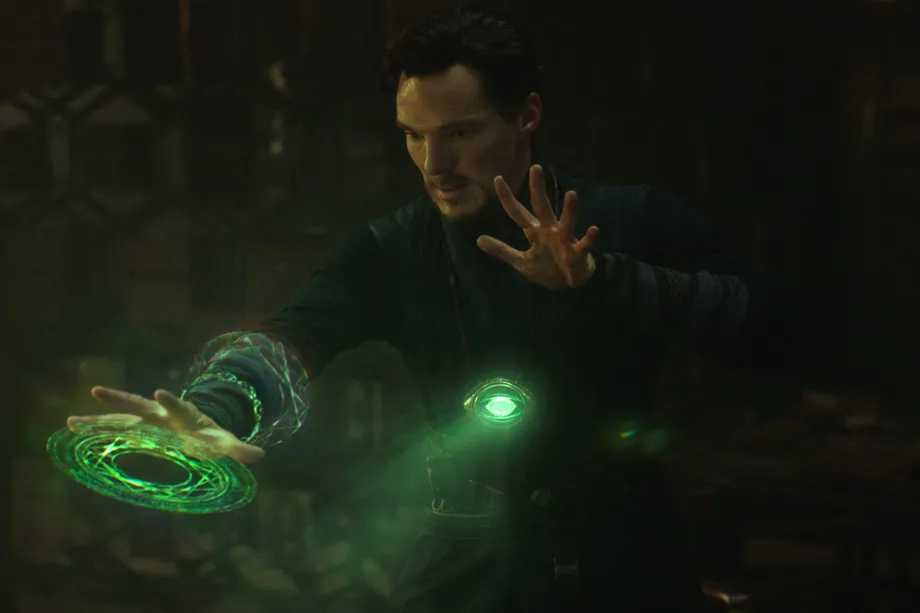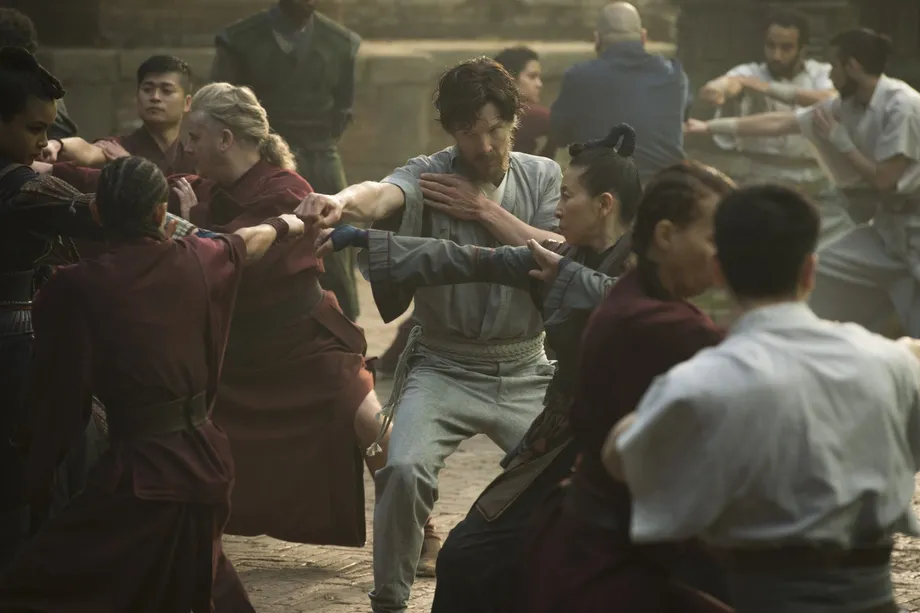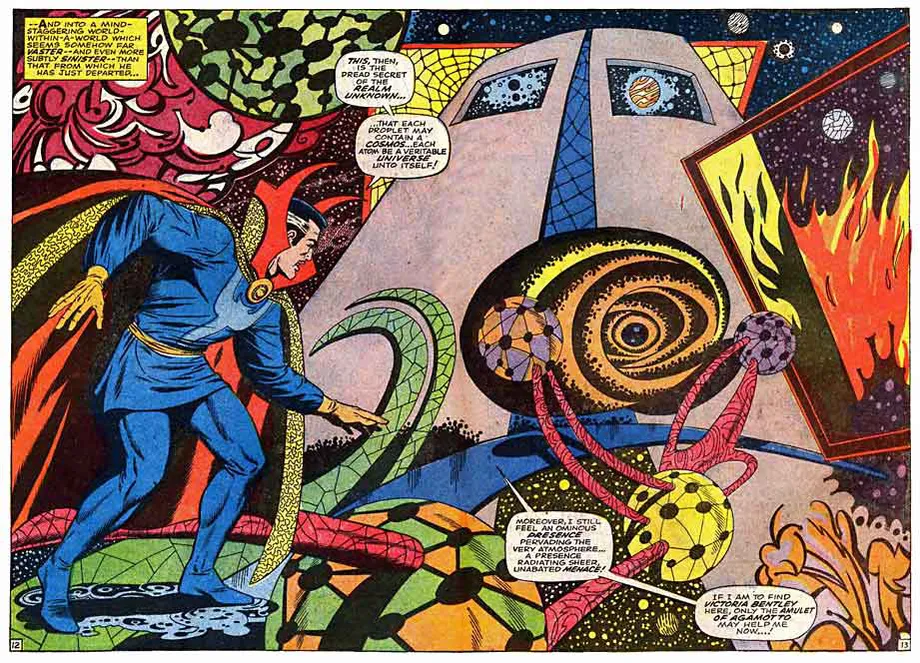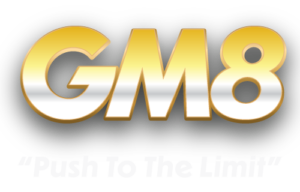
Review: Doctor Strange is Marvel’s best-looking film. But it’s not Marvel’s best movie.
The first seven minutes of Doctor Strange, Marvel’s first cinematic foray into its magical universe full of sorcerers, relics, and dark dimensions, are a punch in the mouth. It’s a fight scene; Kaecilius (Mads Mikkelsen) and his goons are taking on the Ancient One (Tilda Swinton), and to get the upper hand, they begin folding the buildings around them like origami.
It’s vaguely reminiscent of that scene from Inception, you think to yourself. But you don’t know half of what’s about to hit you.
The buildings gnarl and twist like segments of a Rubik’s Cube. Balconies become conveyor belts. An adjacent edifice buckles over and starts spinning, threatening to smash down on various characters like a maniacal rolling pin. Gravity flips and shifts with each camera angle as the goons look like inebriated hamsters on a wheel. The basic physics concepts you’re used to no longer work in the way you’ve been taught. It’s like watching reality tear itself apart.
By the time you catch your breath, a realization dawns: That opening sequence is the most stunning seven minutes of footage Marvel has ever created. And Doctor Strange is, without a doubt, the best Marvel movie in history when it comes to looks — a movie whose ambition and creativity is matched by its execution. If there is justice in the world, Doctor Strange will win an Oscar for its visual effects.
But even though the film is Marvel’s crowning aesthetic triumph, even though all four of its stars — Swinton, Benedict Cumberbatch, Chiwetel Ejiofor, and Rachel McAdams — have their game faces on and act their hearts out, even though it’s got great humor and spirit, Doctor Strange isn’t close to being Marvel’s best movie.
Here’s why that’s okay, and why you should definitely see it anyway.

Doctor Strange’s script is really familiar to anyone who's ever seen a Marvel movie
Marvel Studios at this point is a well-oiled machine. It churns out a handful of superhero flicks a year, each one delivering Marvel’s signature cocktail of smooth, sleek adventure and show-stopping razzle-dazzle. And because Marvel Studios is so proficient, so fluent in superhero storytelling, its floor sits high — just ask Warner Bros and DC (which made this year’s utterly terrible Batman v Superman and even worse Suicide Squad) how hard it is to even scratch that floor.
But if there’s a common weakness that these movies share, it’s that their scripts aren’t usually very memorable and their plots tend to hit the same beats.
Doctor Strange, the story of one Stephen Strange (Cumberbatch), is another example of that reliable Marvel magic and the hurdles Marvel movies face. Strange, just like he was written in the character’s 1960s source comics by the legendary Steve Ditko, is a narcissistic, arrogant, and aloof surgeon. He’s a bit of a bitch in this film, like a Bruce Wayne who never lost his parents and completed his residency at Shonda Rhimes’s medical school for handsome monsters.
Strange’s conflict isn’t with family (like Thor with Loki) or something he created (like Tony Stark and Ultron) or a rival with a vendetta (like Ant-Man with Yellowjacket). Strange, in a sense, is more like the Hulk — his greatest strengths are his biggest weaknesses, and to become a superhero, he loses the singular thing that defines him: his medical career. And yes, I’m fully aware that I’ve just described a rough outline of Eat, Pray, Love.
So Strange sets out, like a lot of Marvel heroes, to find himself. Thor went to Earth. Tony Stark dug into his past. The Guardians of the Galaxy went to jail and Xandar. Ant-Man went to Hank Pym for mentorship. Strange’s journey takes him to Kathmandu, where he hopes to heal himself and become a surgeon again.
Cumberbatch, sporting an American accent, is a fitting Stephen Strange. He spends the film knitting his brows and pursing his lips. He’s sardonic and irreverent in a way that’s different from Tony Stark or Scott Lang because it’s missing Stark and Lang’s charming affability. There’s a cold snarl to Strange’s voice — a testament to
Cumberbatch’s performance because it comes through even when he’s delivering shopworn lines like “This is the part when you leave,” to the love of his life, Christine Palmer (McAdams).
He’s not the only cast member whose character is underserved by familiar plot points, bad dialogue, or both.
For her part, McAdams is winsome as always, but she’s hampered by her role as the boring yet exasperated female love interest who’s unfortunately become a recurring archetype in Marvel’s films. Meanwhile, Ejiofor’s Mordo and Benedict Wong’s character Wong spends much of their filmic existence explaining concepts like astral projection, relics, ancient tomes, and all the mumbo jumbo surrounding “sanctums” — magical security systems for planet Earth that are overseen by the Ancient One.
And Mikkelsen, a brilliant and subversive actor capable of giving rattling performances (see: NBC’s Hannibal, among others), is underused, as his Kaecilius is just a walking Wikipedia entry on the film’s “dark dimension.”
With so many these spinning plates — Cumberbatch’s grumpy sage in one corner, McAdams fawning in another, and Ejiofor and Wong doing the heavy lifting of explaining this weird world in a third — the script’s fraying edges give way to big tears by the movie’s second half.

Make no mistake, Tilda Swinton’s Ancient One is the star of this movie
It’s impossible to talk about Doctor Strange and not discuss the controversy surrounding the film’s diversity. The film has been accused of whitewashing for giving the role of the character known as the Ancient One to Swinton, who is a white British woman when the character in the comic books is of Tibetan descent.
Here’s the problem with adapting great comic books and comic book characters of the ’60s for modern audiences: The characters of color in ’60s comic books weren’t written very well and were frequently based on stereotypes. That puts studios like Marvel in the difficult situation of having to adapt those characters in a way that simultaneously honors the source material and avoids that stereotyping as much as possible.
The decision to cast Swinton as the Ancient One eliminates the problem of the character’s original Orientalist stereotype by taking race out of the equation. But it also means there’s one less Asian character in Marvel’s cinematic universe — a universe where heroes tend to be white men.
On the one hand, Marvel is in the midst of an ongoing, concerted effort to make its universe more representative and inclusive. And in Doctor Strange, the studio has also heavily rewritten Swinton’s character, in a way that goes beyond just casting a character of a different race. Strange’s comic book sidekick Wong gets a similar rewrite. I’m confident that Doctor Strange’s writing team (Jon Spaihts, Scott Derrickson, and Robert Cargill) could’ve kept the character’s ethnicity and written it in a way that wasn’t offensive. I would have loved to see an Asian actor or actress in the role.
But on the other hand, I can’t judge hypotheticals.
And I hope there’s a space to be frustrated at the industry that’s created Doctor Strange and the fact that it cast a white woman as a Tibetan comic book character, while also weighing the merits of what the film does. Because of what it does, it does with Swinton in the role, and she’s absolutely the best thing about the film.
In a movie that hurtles along with so much dazzle and flash, Swinton is a glimmer of minimalism.
She doesn’t waste words. She doesn’t show emotion. She’s effortless. And though the Ancient One is efficient and chilly, she’s also somehow more soulful than every other character in the movie — a testament to what Swinton can do with the slightest of glances or a blink of her eyes.
The Ancient One sees everything, through and beyond people. She’s prone to speaking about bending rivers and going with the current and other topics you might find in a mantra printed on a cup that holds a kale smoothie. But with Swinton’s quiet power, that hippy-dippy word salad about rivers and currents is transformed into convincing logic and indomitable truth.
The worst thing about Swinton’s performance comes in Doctor Strange’s final minutes when you begin to realize with terror and frustration that the movie is running out of scenes for Swinton to steal.
In spite of its flaws, Doctor Strange has that rare Marvel movie magic
Every person who has a favorite Marvel movie has experienced the feeling of smiling uncontrollably at a particularly stunning action scene or sequence. For me, it comes from seeing the visual impossibility of a 2D comic book and the live-action realness of a movie meet for one brief, fleeting moment.
In Iron Man, that moment comes when Tony Stark takes his first flight and zips through the Malibu sky. In The Avengers, it’s during that memorable shot of the team in the tableau as the Chitauri bear down on them. In Guardians of the Galaxy, it happens in the final standoff between the Nova Corps and Ronan the Accuser, each pilot locking into place, to defend Xandar from the Dark Aster.
Doctor Strange has at least three of these moments.
What director Scott Derrickson did visually is the film’s greatest feat. And to fully understand it, you have to understand Doctor Strange creator Steve Ditko’s mind-bending art. When you read those original comic books, each panel feels like looking through a window into a pocket galaxy:

